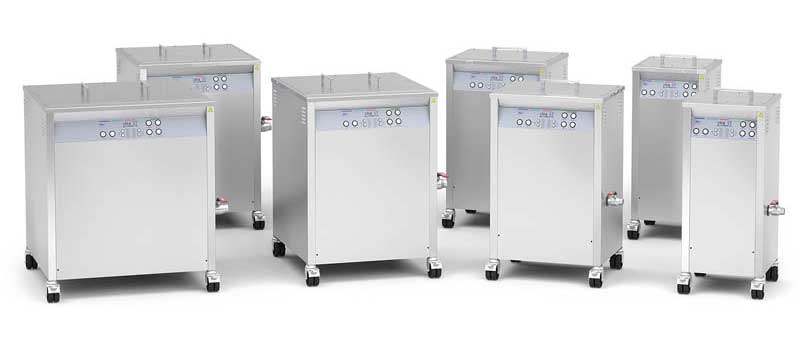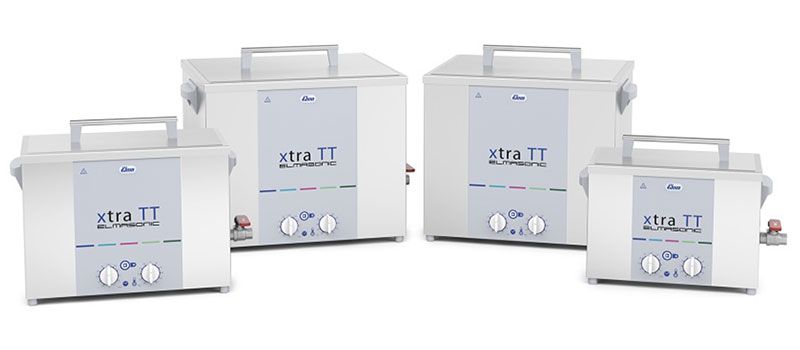
Picking the Best Industrial Ultrasonic Cleaner
Imagine a mountain of greasy, grime-caked parts. Production grinds to a halt. Manual cleaning? Forget it. You need a solution that cuts through the toughest contaminants, fast. That’s where the right industrial ultrasonic cleaner comes in. But “right” isn’t one-size-fits-all. Tank size, frequency, solvent compatibility – the choices can be overwhelming. Let’s cut through the noise and find the ultrasonic powerhouse your business needs.
Selection Steps for the Best Industrial Ultrasonic Cleaner
Be Sure your Unit will Handle the Parts
Your best industrial ultrasonic cleaner is one allowing parts to be fully immersed in the cleaning solution. Check what is called the working depth of an ultrasonic cleaner.
This is defined as the distance between the parts basket bottom or bottom rack and the surface of the cleaning solution. If data sheets do not provide this information ask the vendor.
If you use baskets to hold your parts keep in mind that baskets are slightly smaller than tank internal dimensions. For example, the 3.7-gallon industrial Elma xtra TT 120H benchtop unit has a tank size 11.8 x 9.4 x 7.9 WDH inches. The recommended basket dimensions are 10.6 x 8.4 x 5.3 inches.
How heavy are the parts? This will determine if they (1) are cleaned in baskets (2) are suspended from overhead or (3) rest on racks built into the tank bottom.
Do not overload the bath – efficiency drops off. You’ll get better results when cleaning several smaller batches than one large batch.
Select the Correct Ultrasonic Frequency
Ultrasonic cleaning occurs when billions of microscopic vacuum bubbles implode against surfaces being cleaned to blast loose and carry away contaminants.
- Lower frequencies such as 25 kHz produce larger cavitation bubbles. When these bubbles implode they release a larger amount of cleaning energy. For extremely dirty parts such as removing lapping abrasives or polishing paste, a lower frequency will be more effective.
- Higher frequencies produce smaller cavitation bubbles. These cover fine featured complex surfaces more thoroughly, penetrate small holes and crevices and are more gentle than low frequencies.
Most industrial ultrasonic cleaners operate between 35 and 45 kHz, a range well suited to the vast majority of industrial ultrasonic cleaning tasks.
For small parts requiring long cleaning cycles a good candidate is the 37 kHz benchtop Elma xtra TT series in four tank sizes from 0.79 to 4.8 gallons and designed to operate continuously to 8 hours.
When cleaning a variety of materials consider a dual-frequency ultrasonic cleaner. Large capacity cleaning is accomplished in the Elmasonic xtra ST series in 7 tank sizes from 8 to 67 gallons. These units can be set at 25 kHz for basic cleaning or 45 kHz for fine cleaning.
The best industrial ultrasonic cleaners for very large parts are exemplified by the floor mounted 40 kHz Shiraclean units available in 7 tank capacities from 25 to 204 gallons.
Customized Industrial Ultrasonic Cleaning Units
When “off the shelf” units as described above cannot meet your requirements, a customized system can be created with tank dimensions, cleaning cycles, heating and ultrasonic power, electrical power supply, cleaning solutions and accessories based on your specific requirements. The Tovatech engineering team is competent, flexible and quick, designing and building your system in a short time period.
The post how ultrasonic cleaners work explains more on ultrasonic frequency and other key considerations.
Other Important Features for your Best Industrial Ultrasonic Cleaner
- Temperature controls let you set cleaning solution temperature to the level recommended by the cleaning solution manufacturer.
- Timers control the duration of the cleaning cycle. Some units are designed to start cleaning when the selected temperature is reached and shut down at the end of the cycle.
- A degas mode speeds the removal of trapped air in fresh cleaning solutions An alternative is allowing the equipment operate for a period of time without a load.
- Sweep provides a slight ± fluctuation in the ultrasonic frequency and serves to even out the cleaning action to avoid “hot spots” or possibly damaging cavitation action, “dead zones” or no cleaning action, and harmonic vibrations that could damage delicate and highly finished parts.
- Pulse mode boosts ultrasonic power up to 20% to remove stubborn contaminants.
- Dynamic mode alternates between sweep and pulse for optimized cleaning.
Ultrasonic Cleaning Solutions and Maintenance
An equally critical consideration to help assure thorough cleaning is the proper ultrasonic cleaning solution formulation. These are also called chemicals or soaps.
Today’s biodegradable cleaning solution concentrates are a far cry from the environmentally unfriendly formulas used in the past. Rather than go into detail here we invite you to check our tips on selecting an ultrasonic cleaning solution.
Cleaning solution performance is extended when steps are taken to remove accumulated contaminants dislodged by the cleaning process. Maintenance procedures are described in user manuals.
The Elmasonic xtra ST industrial ultrasonic cleaners offer options to extend cleaning solution effectiveness.
Industrial Ultrasonic Cleaning with Flammable Solvents
As noted above, most industrial ultrasonic cleaning is accomplished with biodegradable, water-based cleaning solutions. These are formulated for specific cleaning challenges and are describe in the post linked above.
When flammable solvents such as IPA, toluene and acetone are required special care must be taken to avoid the danger of a fire or explosion if spilled solvent or vapors are ignited by sparks from internal electronics or external sources.
If your requirements call for the use of flammable solvents, we invite you to check our post on ultrasonic cleaning with flammable solvents. It describes equipment options you can consider and directs you to other resources on the topic.
Investing in your Best Industrial Ultrasonic Cleaner
Cost-benefit analyses are important to any investment in plant and equipment. When it comes to cleaning industrial parts – or any part for that matter – time saved to achieve desired results is an important consideration.
As a first step we invite you to download the pricing guide offered on our website.
But before making your final decision we encourage you to contact the scientists at Tovatech via the options offered on the same page. We are ready to help you select the best industrial ultrasonic cleaner for your requirements, whether benchtop, floor mounted or custom.

